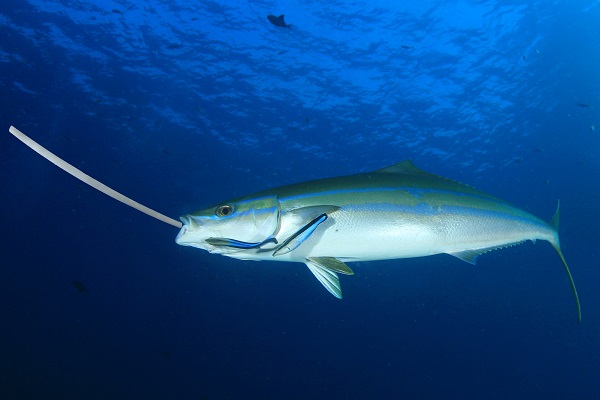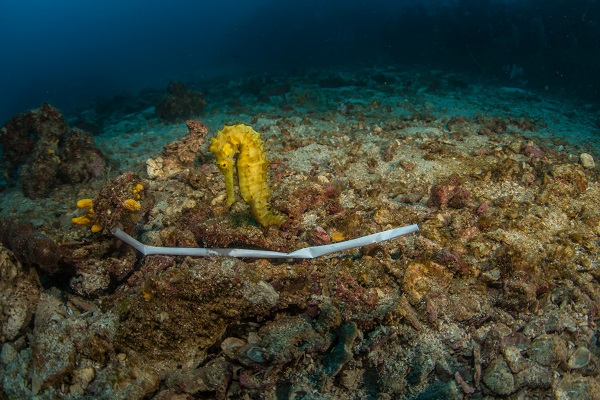In January 2018, Natural Habitat Adventures embarked on a new sustainability initiative to eliminate plastic straws from all of our nature journeys in order to help combat the global environmental challenges posed by single-use plastics. We’ve made great progress so far—as of August, 67 percent of Nat Hab’s trips are free of plastic straws. Natural Habitat is currently on track to meet our goal of eradicating plastic straws from at least 90 percent of our trips by the end of 2018, with the final phases of straw removal slated for 2019.
Destination Manager Emily Kleinburd spearheaded this movement to eliminate the use of plastic straws on all Galapagos trips in late January 2018 and proceeded to rid them from our Peruvian Amazon adventures. In March, Destination Manager Ami Jones also removed straws from our Scotland departures, and the initiative has snowballed from there.

“Once you get people thinking about how easily they can stop using disposable straws, they start thinking about the other single-use plastics that they don’t need and other ways to reduce waste, both while traveling and at home,” says Emily Kleinburd. “Eliminating disposable plastic sets a good example for our travelers: they see how to effectively reduce waste while on vacation, which gives them effective strategies to reduce or even eliminate disposables in their everyday lives.”
This is a natural progression for the world leader in small-group nature travel, which specializes in creating sustainable adventures. As the conservation travel partner of World Wildlife Fund, Nat Hab has set the conservation bar high, including becoming the world’s first carbon-neutral travel company in 2007. An active participant in the Travelers Against Plastic initiative, Nat Hab has already eliminated single-use plastic water bottles across all of our operations.
Local partners around the globe have quickly jumped on board to help us accomplish our next phase of single-use plastic reduction. This systematic elimination of plastic straws is being accomplished country by country, on the ground—a committed collaboration between Nat Hab and our naturalist guides, local partners, and the small hotels, restaurants and communities where we do business. It has been a process of continuous education and buy-in at every level. Developing travel experiences that minimize plastic waste causes a ripple of eco-consciousness and more sustainable business practices that some partners have dubbed the “Nat Hab Effect.”

“Reducing our impact on the planet is something that Nat Hab thinks about constantly. When travelers walk away with similar considerations, that’s when change is most likely to happen on a bigger scale,” Kleinburd says.
As an international travel company, Nat Hab is working to create a global shift in its partners’ use of single-use plastics. Examples include convincing restaurants to stop automatically inserting straws into guests’ drinks in Borneo and educating guests who have safety concerns about drinking glasses being cleaned with tap water in the Brazilian Pantanal. Natural Habitat is working hand-in-hand with local partners from the Arctic to Africa to change the way they do business.
Ultimately, this effort to eliminate straws is all about creating incremental, influential change. We’re betting that theses efforts will motivate our travelers to take home not just memories of underwater encounters with healthy sea turtles, but also new plastic-free habits.

The Global Straw-Free Movement
The straw-free movement has taken off across the globe in recent months, with many organizations around the world working to reduce ocean pollution and landfill waste by eliminating single-use plastic straws.
There is good cause to lessen our use of disposable straws—scientists say that by 2050, there will be more plastic in the ocean than fish. The Great Pacific Garbage Patch, a massive accumulation of swirling ocean plastic that’s twice the size of Texas, continues to grow. The Ocean Cleanup project estimates that “a total of 1.8 trillion plastic pieces are floating in the patch—a plastic count that is equivalent to 250 pieces of debris for every human in the world.”

These sobering statistics lead to a critical concern: the effect on marine life. The myriad ways that plastic litter harms sea life are well-documented: an estimated 90 percent of seabirds and 30 percent of turtles have been found to have plastic in their stomachs. Sea turtles, whales, and seabirds, along with a host of other marine animals, are seriously harmed by ingesting plastic debris—there’s a 50 percent mortality rate for marine life that ingests plastic. Highlighting the crisis is the viral video of a plastic straw stuck in a sea turtle’s nasal cavity, and the story of a sperm whale that washed ashore with 64 pounds of plastic in its stomach.
Americans use 500 million plastic straws each day. Ordinances banning plastic straws in the cities of Malibu, California, and Seattle, Washington, came into full effect this summer, paving the way for other cities to step forward and enact more environmentally responsible policies. Scotland is set to ban plastic straws entirely in 2019, partially inspired by a group of students who succeeded in a campaign to scrap plastic straws from a seaside Scottish village. Restaurants are increasingly offering compostable and recyclable straw options as viable alternatives, though many people are simply choosing to go without.
Natural Habitat applauds other organizations’ efforts to protect aquatic environments and wildlife by curbing the use of plastic straws. By working together, we can all create a cleaner world that is less reliant on disposable plastics, conserving ocean habitats and the marine animals that depend upon them.

© Rebecka Bloom
























